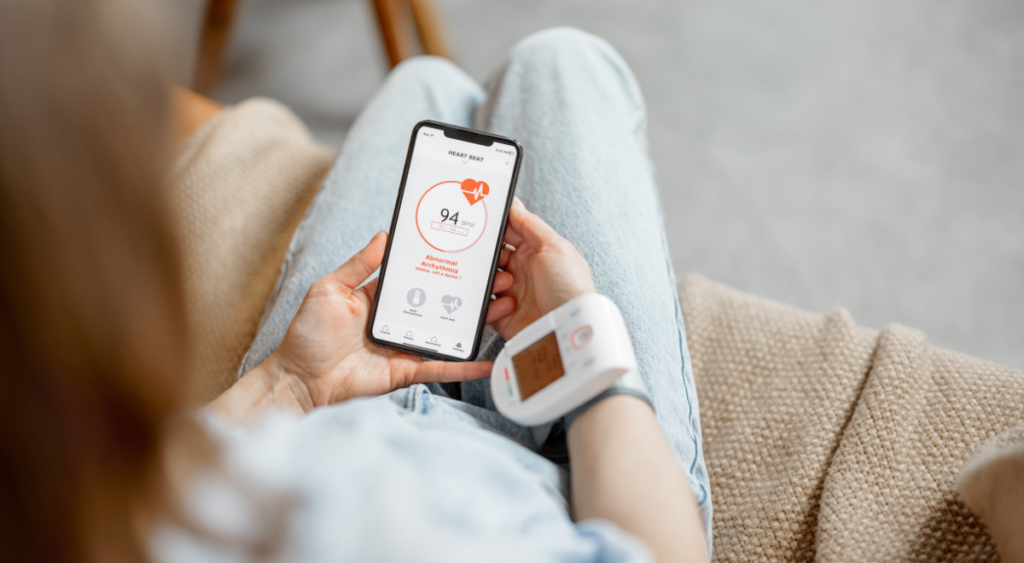How Remote Patient Monitoring (RPM) Helps Manage Congestive Heart Failure (CHF)

Heart failure, also known as congestive heart failure, is a common chronic illness that results in recurring hospital stays, which lowers patients’ quality of life and puts a significant strain on healthcare systems. By continually monitoring vital indicators like blood pressure, heart rate, and blood oxygen levels (SpO2), Remote Patient Monitoring (RPM) plays a crucial role in the management of patients with heart failure, with the goal of making patient monitoring easy and reducing re-hospitalization rates.
Congestive Heart Failure (CHF) accounts for over 1 million hospitalizations annually in the U.S., making it one of the leading causes of preventable readmissions¹. Remote Patient Monitoring (RPM) is emerging as a game-changer in managing CHF by enabling timely interventions and improving patient outcomes.
In this blog, we’ll explore the importance of basic vital sign tracking, the growing need of RPM and cardiac monitoring in the management of congestive heart failure.
Table of Contents
ToggleWhy CHF Management Needs Remote Patient Monitoring (RPM)?
Millions of individuals worldwide suffer from heart failure, a cardiovascular condition that is a major reason why elderly patients are admitted to hospitals. Patients’ quality of life gets greatly impacted with frequent hospitalizations that come with emergencies that arise due to heart failure. It not only emotionally and mentally impacts a patient but also puts the burden on healthcare resources.
Since heart failure exacerbations are unpredictable and can arise anytime, regular monitoring and efficient care outside of conventional clinical settings is needed. By facilitating proactive management, prompt interventions, and high levels of patient engagement, remote patient monitoring provides reliable solution for CHF management.
How RPM Helps Reduce CHF Readmissions?
According to the American Heart Association (AHA) report, as their symptoms deteriorate, many heart failure patients are readmitted to the hospital for urgent care.”
By continuously monitoring important physiological markers, remote patient monitoring can help close the gap between hospital discharge and follow-up appointments. Cardiologists and other medical professionals can identify early indicators of decline in patient health and can take prompt action by understanding the real-time data, which may help avoid readmissions to the hospital.
Key Vital Signs to Monitor in CHF Patients
- Blood Pressure Monitoring: Which impacts their health over the course of the illness. Frequent blood pressure monitoring can lessen heart strain, control hypertension, and prevent exacerbations. Patients with heart failure can take their blood pressure at home using RPM devices with automated blood pressure cuffs. The data is transmitted to the RPM platform for real-time evaluation by physicians.
- Pulse Oximeter: A pulse oximeter helps to measure both the pulse and the light wavelength that indicates the blood oxygen level. Care providers use this device to treat patients with heart problems, lung conditions, and asthma.
Healthcare providers have a smart pulse oximeter to access the patient’s data before the appointment. It helps them to make a suitable care plan for the patients and provide them with the same when they visit, saving more time.
- Weight Scales: With the use of weight scales in RPM, physicians keep track records of the patient’s weight changes. It helps to measure any chronic condition symptom that leads to changes in the patient’s weight.
Weight scales help physicians encourage patients who are obese to take responsibility and recognize patterns in their behavior by enabling self-management. It is essential to manage obesity because it is a significant risk factor for many diseases.
Managing Congestive Heart Failure (CHF) requires constant monitoring and timely intervention—RPM makes it possible.
This blog explains how Remote Patient Monitoring empowers healthcare providers to track vital signs, detect early warning signs, and reduce hospital readmissions for CHF patients. Learn how HealthArc’s RPM platform delivers real-time insights, enhances patient engagement, and supports proactive heart failure management from the comfort of home.
Advanced Devices for Heart Failure Monitoring
Monitoring heart failure patients beyond hospital settings requires advanced devices. Wearables, implanted pacemakers, and other advanced devices are some of the examples of devices that provide ongoing monitoring and comprehensive health insights to make informed decisions.
- Defibrillators and Pacemakers: Implanted pacemakers and defibrillators are needed for individuals with severe cardiac failure and arrhythmias. These devices monitor and send data about the heart function in addition to controlling heart rhythm. Modern pacemakers identify abnormal heartbeats, modify the pace, and notify medical professionals of any notable alterations. This real-time data lowers the likelihood of hospitalization by enabling effective treatment plan modifications.
- Telehealth Platforms and Wearable Technology: Wearable technology has significantly improved patient engagement and heart monitoring. Heart rate, physical activity, and other parameters are continuously monitored by gadgets such as fitness trackers and smartwatches. These wearables offer a thorough picture of the patient’s health when integrated with remote patient monitoring platforms, which helps physicians make quicker and more accurate decisions.
Combining these modern technologies with Machine Learning (ML) and Artificial Intelligence (AI) will be key to the future of remote heart failure monitoring. These technologies analyze large datasets for more precise forecast of heart failure exacerbations and suggest treatment modifications in a patient’s treatment plan. The goal of ongoing research is to improve these devices’ accuracy and functionality so they can manage chronic heart failure even more successfully.
Conclusion
Remote Patient Monitoring offers immediate insights that support proactive treatment and intervention, as well as improved patient engagement, by enabling continuous monitoring of vital indicators like blood pressure, heart rate, and weight. RPM has the potential to become a vital tool in the battle against severe heart failure as technology evolves, with a focus on enhancing patient outcomes and reducing the strain on healthcare systems.
When it comes to implementing a reliable RPM platform in a healthcare practice, HealthArc’s RPM platform empowers providers to manage CHF care more effectively while ensuring compliance with HIPAA and SOC 2 standards. It helps practices stay connected with their patients outside of their in-person visits, optimize reimbursement and minimize documentation with increased clinical efficiency. With our HIPAA compliant platform, communicate with patients via audio-video calls, SMS, automate documentation via AI-based medical scribe, make care plans available to the patient, re-fill prescriptions, and review diagnostics.
HealthArc offers seamless integration with all leading EHRs through HL7 and FHIR capabilities. To know how our RPM software helps in managing CHF care remotely, book a free demo now or feel free to talk to our team at (201) 885 5571 for more details.
Frequently Asked Questions (FAQs)
RPM allows continuous monitoring of CHF patients at home, enabling early detection of worsening symptoms and timely interventions to prevent hospitalizations.
By identifying early warning signs and facilitating prompt treatment adjustments, RPM helps reduce CHF-related hospital readmissions.
Commonly monitored vitals include weight, blood pressure, heart rate, oxygen saturation, and respiratory rate.
Yes, RPM is suitable for elderly CHF patients, especially with user-friendly devices and caregiver support to manage the technology.
References:
Most Recent Blogs
Categories
Related Blog
- July 12, 2025 | Read Time: 11 mins
How Remote Monitoring & AI Are Tackling Burnouts in Small Practices?
Approximately half of U.S. physicians experience symptoms of burnout, including exhaustion, cynicism,...
Learn More- June 21, 2025 | Read Time: 8 mins
Chronic Care Management Trends 2025: CMS Updates, AI Tools & RPM Integration
While healthcare delivery has become more accessible, chronic conditions continue to impact...
Learn More- March 8, 2025 | Read Time: 13 mins
Overcoming Remote Monitoring Challenges in Pain Management: RPM vs. RTM Solutions
Pain affects over 50 million adults in the U.S., yet many struggle...
Learn More


